Mimulus ringens, Allegheny monkeyflower, is an upright native perennial herbaceous plant that blooms in the summer.
In NJ, there are 2 species of monkeyflowers: Mimulus ringens, Allegheny monkeyflower, and Mimulus alatus, winged monkey flower. They can be distingushed by the lengths of their pedicels (flower stalks) and their petioles(leaf stalks). Illustrations will be presented below.
Flowers
The Allegheny monkeyflower's irregularly shaped flowers are pale blue-violet and about 1 inch wide. The flower corolla forms 2 glandular hairy lips. The upper lip is upright with two lobes. The lower lip has 3 lobes. The lower middle lobe has 2 raised hairy yellow areas ("palate") reducing the opening of the throat.
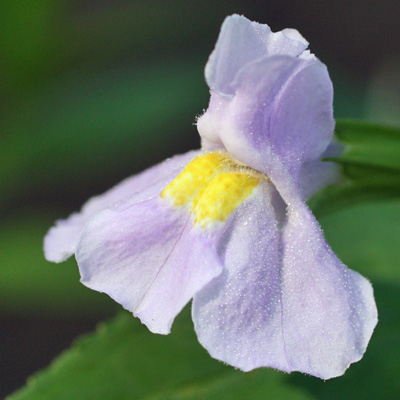
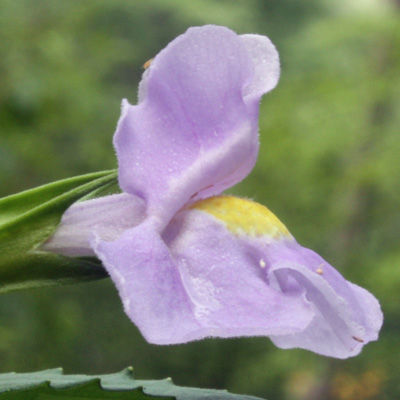
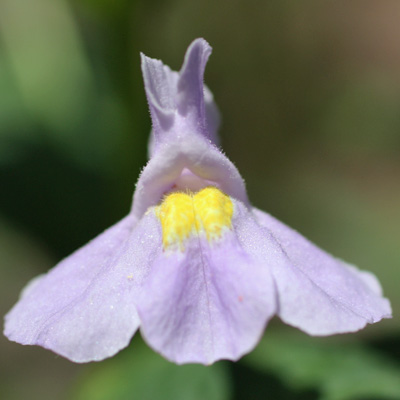
The tubular green calyx is formed by the fusion 5 sepals with 5 ridges ending in long linear teeth. The calyx is about 3/4 inches long. The pedicel (flower stalk) is as long or longer than the calyx.
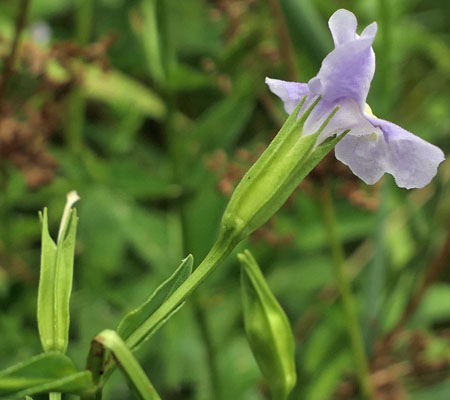
A look into the throat.
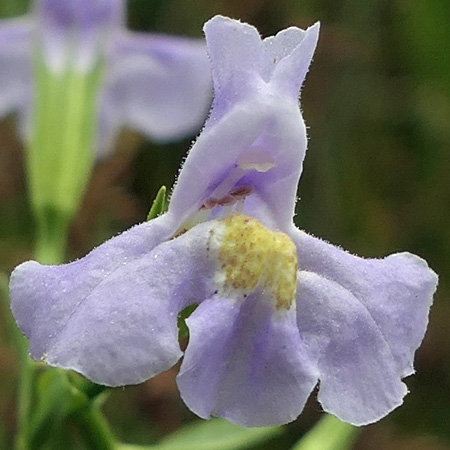
Hairs and glands on the petals and back of throat. Flat whitish stigma just below the upper lip. Anther is brown. Spots on palatte
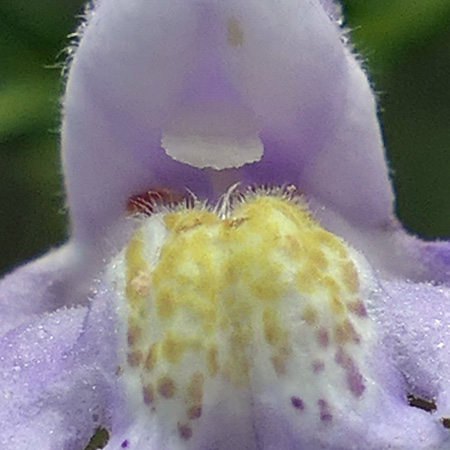
The flower has two pairs of stamens of different lengths. Insects have to be strong enough to pry open the lips to get to the pollen.
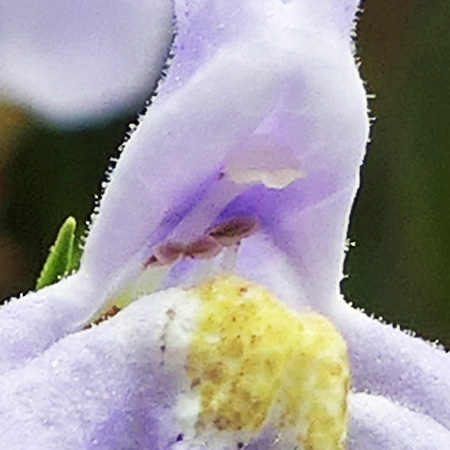
The solitary flowers grow singly from the leaf axils. Since the leaves are opposite, sometimes flowers would appear from both leaf axils. The flowers are scattered around the plant but generally near the top, most likely better for pollination. The flowers are mainly pollinated by bees which are strong enough to pry open the lips to access the nectar.
Fruit
Fruit: After the flower is pollinated, the corolla and the attached stamens are no longer need and are discarded. The pistil is in the calyx area and the stigma is persistent. Photo of developing fruit. Later, it will turn brown and dry up.
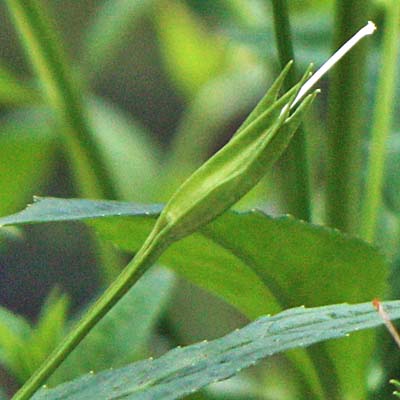
Leaves
The leaves are simple, opposite and sessile (no petioles-leaf stalks) and sometimes clasping. The leaves are up to 4 inches long tapering to a pointed tip. The margins are have widely spaced teeth.

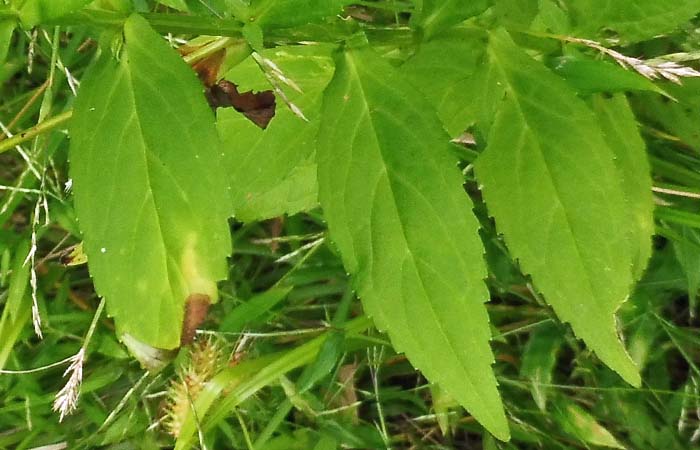
M.ringens vs M. alatus
Some distinguishing features between M. ringens from M. alatus:
Allegheny monkeyflower, M. ringens:
- Flower has a long pedicel (flower stalk),
longer than 3/4 inch. - Leaves are sessile (no petiole -leaf stalk)
- Calyx teeth are long
Winged monkeyflower, M. alatus:
- Flower has short pedicel (flower stalk),
less than half inch - Leaves have petioles (leaf stalk),
longer than half inch - Calyx teeth are short
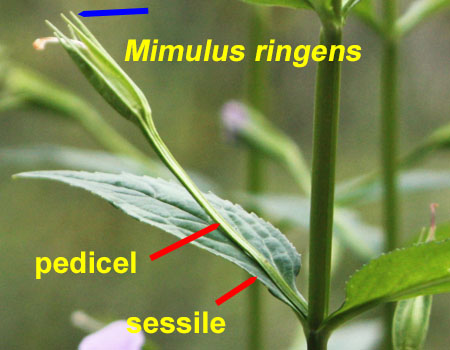
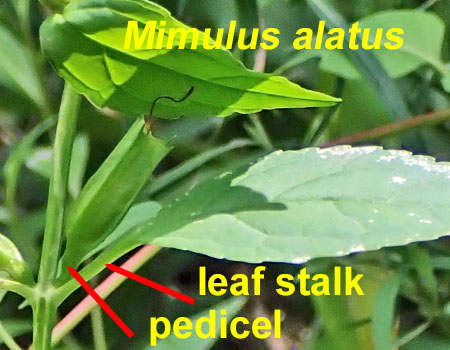
Allegheny monkeyflower is common while winged monkeyflower is less common.
Plant
The Allegheny monkeyflower plant grows to about 3-4 ft. tall. The stem is erect and branches. The stem is smooth, hairless and close to the base is 4 angled.
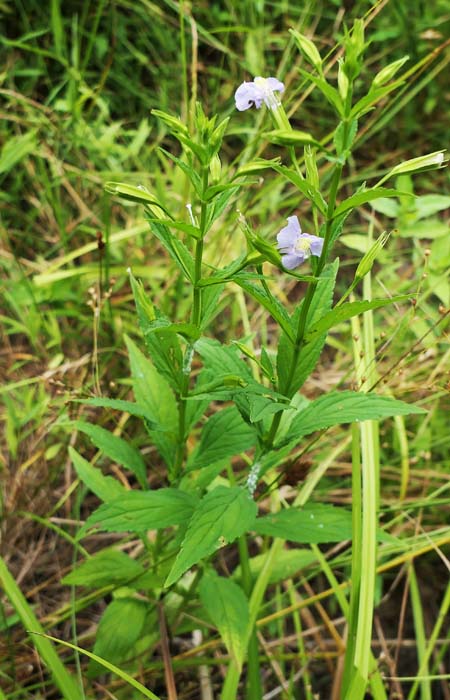
Habitat
Habitat: wet areas in partial sun.
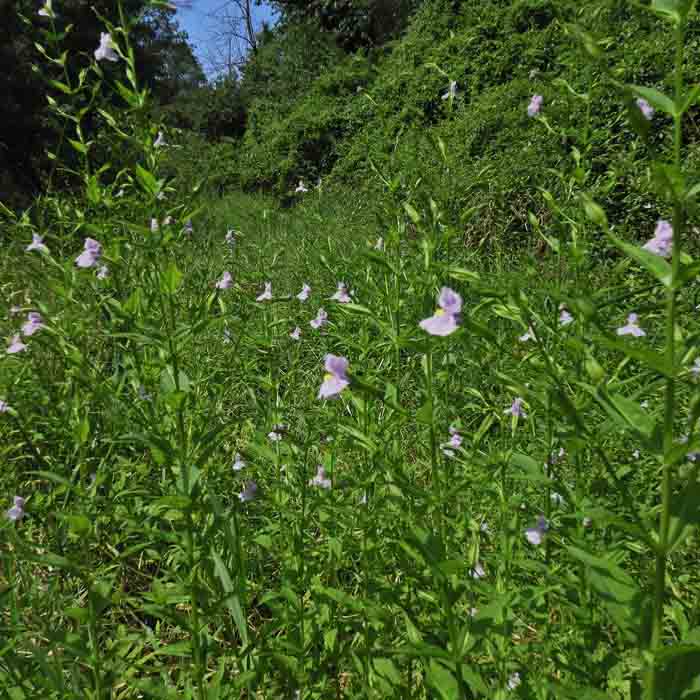
Text by Millie Ling and all photos by Hubert & Millie Ling. Photos: flowers - late July, August, cultivation & various parks/preserves in central NJ.
Additional information
Additional information / references:
- The USDA database shows Mimulus ringens distribution in the US and other information: https://plants.usda.gov/home/plantProfile?symbol=MIRI
- Flora of Pennsylvania : https://www.paenflowered.org/apgii/lamiales/phrymaceae/mimulus/mimulus-ringens
- GoBotany - key to the Mimulus - includes NJ species: M.ringens vs M. alatus: https://gobotany.nativeplanttrust.org/dkey/mimulus/#all
- Missouriplants- good information and photos: https://www.missouriplants.com/mimulus_ringens_page.html
- Jersey-Friendly Yards - great gardening information: https://www.jerseyyards.org/plant/3887/